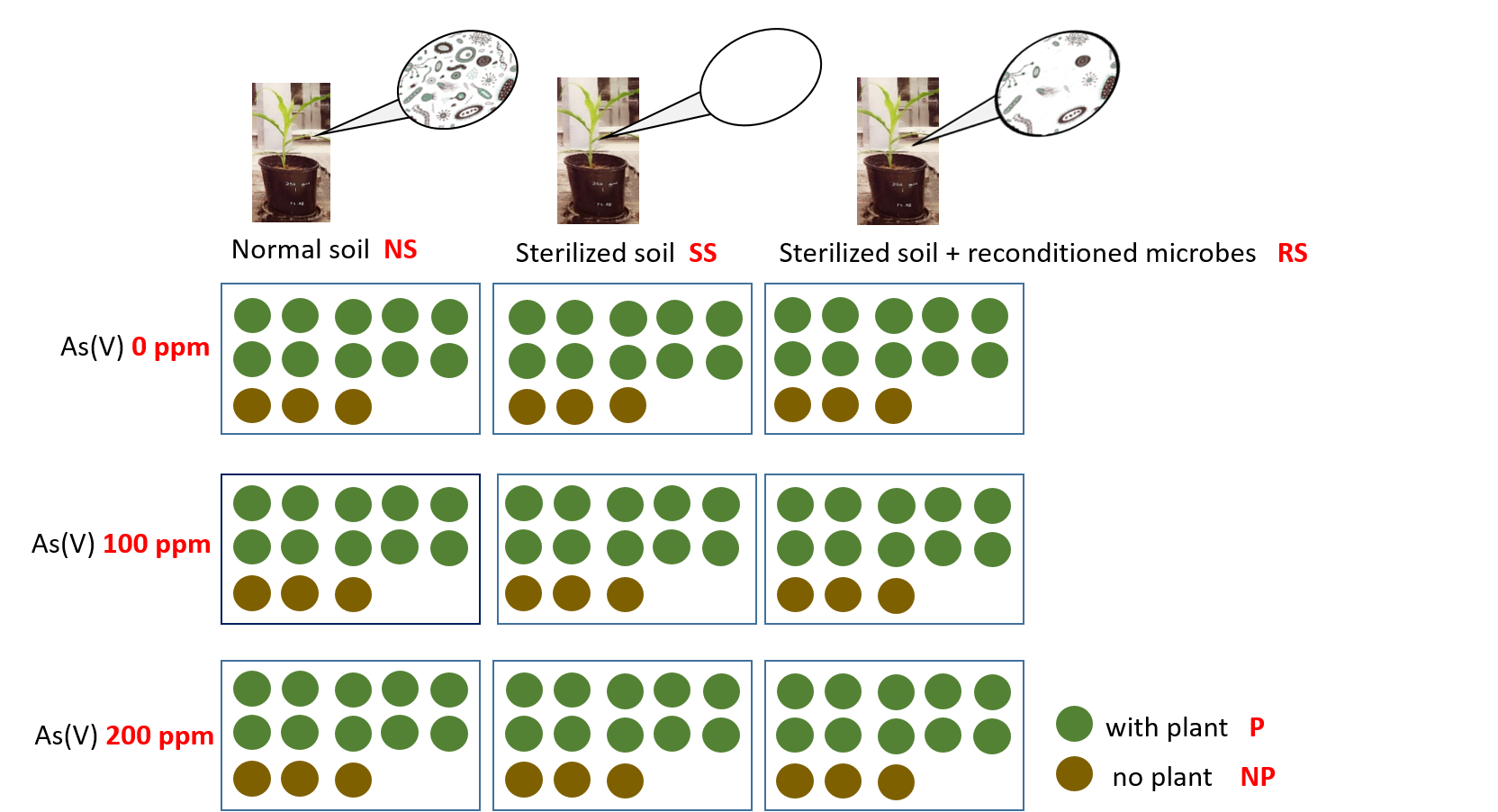Plant and microbiota-dependent effects on arsenic behavior in the soil-plant system
Arsenic (As) is a trace metalloid known as “the king of poisons”. As is also a class one carcinogen and its high toxicity correlates with a host of human diseases e.g. skin cancer. The speciation of As largely regulates its mobility, bioavailability and toxicity in the environment. As speciation is not only driven by abiotic parameters (pH, DOC), but also controlled by biotic interactions with plants and microbes. Soil microbiota can enzymatically transform As from inorganic to less-toxic organic forms. We performed an experiment to investigate the effects of plant and soil microbiota on As behavior in the soil-plant system as well as the physiological responses of maize plants to As exposure.
In the experiment, we set up nine experimental groups: three soil treatments (normal soil (NS), sterilized soil (SS) and first-sterilized soil reconditioned with microbes (RS)) intersecting with three As concentration groups (0, 100 and 200 ppm). In each treatment group, 10 pots with maize plants and three pots without maize were cultivated (Figure 1). For the As treatments we spiked soils with different levels of As. After soil incubation for two months allowing for the equilibration of As with soils, we grew 99 maize plants and regularly determined multi-element concentrations in soil water with ICPMS as well as As speciation by means of HPLC-ICPMS.
First, the sum of organic As species showed positive correlations with DOC in soil water but negative relations with the pH values, which indicates that pH and DOC are two controlling abiotic factors regarding As methylation in the soil environment. Second, the maize phenotyping data revealed the hazardous physiological effects of As on plant health. With the increasing of As concentrations, plants experienced smaller plant height, lower chlorophyll content, and greater scale of spot disease on leaves. Third, microbes do play a key role in As speciation and its effects on plant health. Plants from NS acquired the best health conditions even at high As levels due to the presence of native microbes; on the contrary, the health conditions of plants in SS were the worst. Thanks to the recondition of native microbes in RS, the health condition level of plants from RS was between NS and SS. Overall, As behavior in soil-plant system is not only controlled by abiotic parameters including DOC content and pH values in soil water, but also strongly influenced by the biotic factor – soil microbiota. Until SCS Fall Meeting 2020, we will furthermore analyze various plant tissues (root, stem, leaf and kernel) by means of ICP-MS and HPLC-ICPMS to fulfill information regarding the concentrations and speciation of As, which gains us a better understanding of As behavior in the soil-plant system as well as As transformation and toxicity along the food chain.
